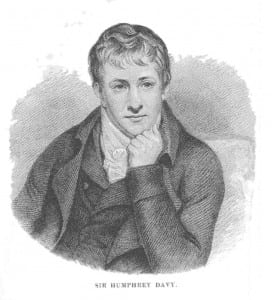Lunch Hour Lecture: The state, science and Humphry Davy
By Thomas Hughes, on 4 February 2016
“Science, gentlemen, is of infinitely more importance to a state than may at first sight appear possible”. While few scientists would disagree with this today, it was the 19th-century chemist Humphry Davy who made the observation. In a recent Lunch Hour Lecture Professor Frank James (UCL Science & Technology Studies) took us on a whistle stop tour of Davy’s colourful life, his science and his relationship with the state. 
A poet of Penzance
Born in Penzance on December 17, 1778, Davy initially showed a passion for poetry. This was largely descriptive poetry, such as this extract about St Michael’s Mount in Cornwall: “Beat by the storms of ages, stands unmov’d, Amidst the wreck of things—the change of time.”
However after his schooling, his godfather apprenticed him to a surgeon and it was in the apothecary there where he discovered what would become a life-long interest in chemistry.
While living in Penzance he met distinguished natural philosophers including the engineer Davies Giddy who encouraged Davy and offered him the use of his library.
 Close
Close


 With 5 November just around the corner, this Lunch Hour Lecture on how fireworks have helped to develop a relationship between science and art from
With 5 November just around the corner, this Lunch Hour Lecture on how fireworks have helped to develop a relationship between science and art from 
